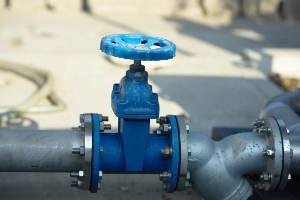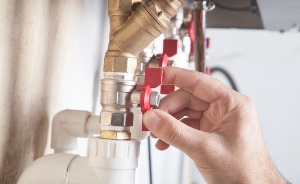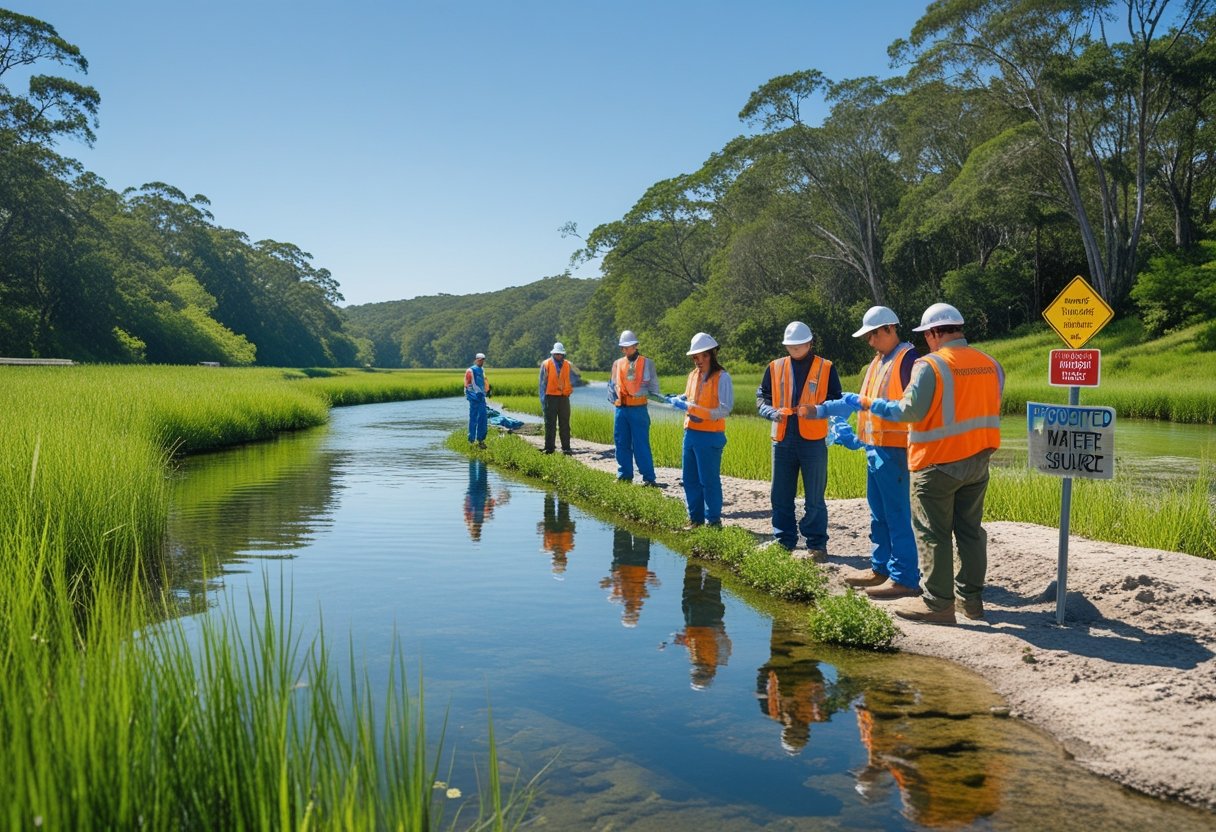Backflow advice is more important than ever for California property owners facing the challenges of drought in 2025.
In drought years, California shifts to relying on groundwater for up to 60% of its water supply, according to Mission Spring's Water District. That reliance, combined with lower system pressure, raises the likelihood of backflow, making professional prevention measures critical for 2025 water safety.
Drought conditions can increase the risk of backflow contamination in water systems, making proper prevention devices essential for protecting your property's water supply. When water pressure drops during conservation efforts or water shortages, the chance of contaminants flowing backward into clean water lines increases significantly.
We've seen how drought restrictions affect HOAs and property owners, from landscaping limitations to water usage guidelines. These regulations, while necessary for conservation, create new responsibilities for property owners.
Understanding both the drought context and backflow prevention requirements helps you maintain compliance while protecting your water system's integrity during these challenging conditions.
This guide explains how drought conditions impact backflow risks, what the California plumbing code requires, and how to protect your property with the right prevention strategies.
Here's what you need to know:
- How California droughts affect your water system
- What is backflow and why is it a concern during droughts?
- Essential backflow prevention strategies for california property owners
- How to choose the right backflow preventer for your property type
- California drought and backflow assistance programs
Whether you’re managing a home, farm, or commercial facility, the right measures now can safeguard your water, and keep you compliant.
How California droughts affect your water system
California has a long history of drought cycles that significantly affect water resources across the state. Droughts have become more intense in recent decades due to climate change, with exceptionally warm and dry periods creating challenges for both infrastructure and property owners.
Mandatory water restrictions during droughts
California faces recurring drought conditions, with significant droughts occurring in 1976-77, 1987-92, 2007-09, and 2012-16. The 2012-16 drought was the hottest in the state's recorded history, showing how climate change is intensifying these events.
Tree ring studies suggest historic droughts may have lasted 20 or more years, indicating that current drought cycles are part of California's natural climate pattern.
Water conservation becomes mandatory during severe droughts. Restrictions typically include:
- Limited outdoor watering schedules
- Bans on washing vehicles at home
- Requirements for water-efficient fixtures
- Tiered water pricing to discourage excess use
These measures aim to stretch limited water supplies during periods when California receives less than its average 200 million acre-feet of precipitation annually.
How droughts impact plumbing systems and performance
Drought conditions create several challenges for plumbing systems that property owners should understand.
During water shortages, water quality often decreases as suppliers draw from lower reservoir levels or alternative sources. This can introduce more sediment and minerals into the water supply.
Lower water pressure is common during droughts as utilities reduce system pressure to minimize leaks and conserve water. This reduced pressure can affect how plumbing fixtures function in homes and businesses.
Water sitting longer in pipes due to conservation efforts may lead to increased mineral buildup and potential corrosion issues, especially in older plumbing systems.
These conditions can accelerate wear on plumbing components and may require more frequent maintenance or earlier replacement of parts.
Drought responsibilities for California property owners
Property owners face several responsibilities during drought periods that affect both compliance and protection of their plumbing systems.
We recommend installing water-efficient fixtures and appliances to reduce consumption and comply with conservation regulations. Low-flow toilets, faucet aerators, and efficient washing machines can decrease water usage by 20-30%.
Regular inspection of plumbing systems becomes more critical during droughts. Look for:
- Slow leaks in toilets and faucets
- Pipe corrosion from changing water chemistry
- Backflow prevention device functionality
Maintaining proper backflow prevention is especially important during droughts when water pressure fluctuations can increase contamination risks. Annual testing ensures these devices function correctly when most needed.
Smart water monitoring systems can help property owners track usage and detect leaks early, potentially saving thousands of gallons and avoiding costly water bills.
What is backflow and why is it a concern during droughts?
Backflow happens when water flows backward through pipes, bringing contaminants into clean water supplies. During drought conditions, this risk increases as water pressure changes and systems face unusual demands.
How backflow occurs in plumbing
Backflow occurs when water moves in the opposite direction of its intended flow in plumbing systems. This typically happens in two ways: back-siphonage and backpressure.
Back-siphonage happens when there's negative pressure in the water supply, often during water main breaks or heavy water usage. This creates a vacuum effect that pulls contaminated water backward.
Backpressure occurs when downstream pressure exceeds supply pressure. During droughts, this risk increases as water systems experience unusual pressure fluctuations due to conservation measures and irregular water usage patterns.
California's plumbing code requires backflow prevention devices, especially in areas prone to drought. These devices stop contaminated water from flowing backward into the clean water supply.
Health risks from backflow during droughts
When backflow occurs, it can introduce various contaminants into drinking water. These may include:
- Chemicals from irrigation systems or industrial processes
- Bacteria and pathogens from sewage or standing water
- Pesticides and fertilizers from landscaping
The health risks from contaminated water are serious. People may experience stomach illness, respiratory problems, or more severe health issues from exposure to these contaminants.
During droughts, these risks increase because water sits longer in pipes and water quality monitoring may be less frequent. Lower water levels can also concentrate existing contaminants, making them more dangerous.
We recommend testing water regularly during drought periods, especially if you notice changes in water color, smell, or taste.
Impact on irrigation and industrial properties
Properties with irrigation systems face higher backflow risks during droughts. When irrigation systems run intermittently to conserve water, pressure fluctuations increase backflow potential.
Industrial properties also face unique challenges:
Property Type
Drought-Related Backflow Risks
Farms
Pesticides and fertilizers can enter water supply
Manufacturing
Industrial chemicals and cooling water contamination
Hospitals
Medical waste and chemicals
Many irrigation systems rely on reduced pressure during droughts, which can compromise backflow prevention. Regular testing becomes even more critical for these properties.
California regulations require specific backflow preventers for high-risk properties. Maintaining proper documentation of all tests and repairs is essential for compliance with local water authorities.
Essential backflow prevention strategies for california property owners
Proper backflow prevention is critical for safeguarding California's water supply, especially during drought conditions when water quality becomes even more important. Effective strategies combine the right equipment, regular maintenance, and adherence to local regulations.
Devices required for backflow control in drought-prone areas
Property owners in California must install appropriate backflow prevention devices based on their specific risk factors. Water suppliers like Cal Water assess how water is used and how pipes are configured to determine which devices are necessary.
Common required devices include:
- Double-check valve assemblies
- Reduced pressure principle backflow preventers
- Pressure vacuum breakers
These devices are typically required if your property has:
- Irrigation systems
- Fire sprinkler systems
- Swimming pools
- Private wells alongside municipal water
- Medical or commercial equipment
During droughts, when water pressure fluctuations are more common, having proper backflow prevention becomes even more crucial. We recommend consulting with a certified plumber to evaluate your property's specific needs.
Backflow testing and maintenance
Regular testing is not just recommended—it's required by California law. All backflow prevention devices must be tested annually by certified testers. Testing ensures your devices function correctly and prevent contaminated water from flowing back into the public water supply.
After testing, documentation must be submitted to your water provider. For example, EBMUD requires completed test forms within 30 days of notification.
Maintenance tips:
- Schedule annual inspections with testers on your water provider's approved list
- Keep devices clear of debris and vegetation
- Protect outdoor devices from freezing temperatures
- Repair or replace failed devices immediately
Maintaining proper records of all tests, repairs, and replacements is essential. These records prove compliance if requested by local authorities and help track your device's performance over time.
Meeting California’s drought and backflow regulations
Each water district in California has specific requirements for backflow prevention. The Los Angeles Department of Water and Power, for instance, has developed a comprehensive Cross Connection Control Program in accordance with State Water Resources Control Board regulations.
Property owners must:
- Notify water providers about property changes (new wells, fire sprinklers, etc.)
- Allow access for inspections
- Install required devices within specified timeframes
- Maintain proper documentation
Failing to comply can result in significant penalties, including fines and potential water service interruption. Commercial properties face additional scrutiny, with water districts reviewing usage each time a new tenant occupies the space.
We recommend staying in regular contact with your local water provider to ensure you're meeting all current requirements, which may change during drought conditions.
The role of cross-connection control in drought response plans
Cross-connection control programs are essential components of California’s strategy to maintain water safety during drought conditions. A cross-connection occurs when a potable water line is directly or indirectly connected to a source of contamination—such as irrigation systems, industrial plumbing, or greywater reuse systems.
In drought years, increased use of alternate water sources (e.g., reclaimed water or wells) raises the likelihood of unsafe cross-connections. Local water agencies and the State Water Resources Control Board mandate strict controls to manage this risk.
Key elements of a drought-ready cross-connection control plan include:
- Inventory and risk assessment of all water connections on a property
- Installation of approved backflow devices at vulnerable points
- Annual testing and recordkeeping by certified specialists
- Staff training and emergency response procedures in case of backflow events
According to the California Department of Public Health, all public water systems must maintain an active cross-connection control program as part of their operating permit. This makes compliance not only a best practice but a regulatory requirement.
How to choose the right backflow preventer for your property type
Choosing the correct backflow preventer depends on your property’s water usage, risk level, and plumbing configuration. California code requires specific devices based on how likely your system is to introduce contaminants into the water supply.
For residential properties, especially those with irrigation systems or pools, common devices include:
- Double-check valve assemblies (DCVAs) – Suitable for low to moderate hazard systems, like lawn sprinklers.
- Pressure vacuum breakers (PVBs) – Effective for preventing back-siphonage in irrigation setups.
- Hose bibb vacuum breakers – For simple outdoor faucet protection.
For commercial and high-risk properties, such as those with medical equipment, industrial chemicals, or private wells, reduced pressure zone (RPZ) devices are typically required. These provide the highest level of protection and are designed to handle both backpressure and back-siphonage.
Before installation, a certified plumber should perform a cross-connection survey to determine the correct device. Choosing the wrong type may lead to compliance issues and ineffective protection.
California drought and backflow assistance programs
California offers several support options for property owners dealing with drought conditions and backflow prevention requirements. These programs help with financial costs and technical needs during water shortages.
Financial aid for drought-related water system upgrades
The Small Community Drought Relief Program, managed by the California Department of Water Resources, provides crucial support to property owners in drought-affected areas. Contact them at (916) 803-9251 or email smallcommunitydrought@water.ca.gov for assistance.
County Drought Resilience Planning is another valuable resource. The DWR County Drought Resilience Planning Assistance Program offers financial and technical help to counties implementing SB 552 requirements.
For agricultural property owners, the USDA provides Emergency Loans to recover from production and physical losses due to drought conditions. This assistance becomes available when your county is declared a disaster area.
Local Resources:
- Water district payment plans
- Low-income assistance programs
- Water conservation rebates
Professional services for backflow prevention
Licensed backflow prevention specialists can help property owners comply with regulations while conserving water. We recommend working with certified testers who understand both backflow requirements and drought-specific concerns.
Many water districts maintain lists of approved contractors who can install, test, and repair backflow prevention devices. These professionals ensure your system meets safety standards while minimizing water waste.
During drought conditions, some areas offer free or discounted backflow device inspections. Check with your local water provider about available services.
Key Professional Services:
- Installation of drought-appropriate backflow devices
- Annual testing and certification
- Emergency repair services
- Water efficiency consultations
Conclusion
California’s prolonged drought conditions make water system safety a top priority, and that includes robust backflow prevention. Pressure drops, irrigation cycles, and inconsistent supply all contribute to higher backflow risks, especially in drought-affected zones.
Choosing the right device, performing annual tests, and following local plumbing codes are essential steps for protecting both property and public health.
Need expert help navigating California’s 2025 drought regulations? Contact Pacific Backflow to schedule certified testing, system upgrades, or cross-connection inspections today.











